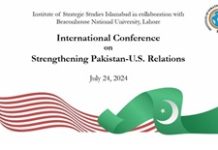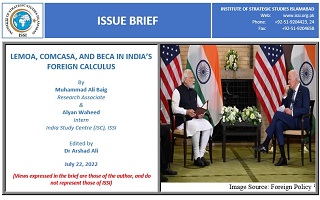Introduction
Apparently, the cornerstone of Indo-American relations is defence and strategic cooperation. It is interesting to note that defence cooperation was the first area where the United States (U.S.) and India started engaging and the outcome of such a collaboration culminated at the Malabar Naval Exercise of 1992.[2] However, long before such a bilateral cooperation, in 1959, John Fitzgerald Kennedy, then the Senator from Massachusetts gave a speech in the Congress and stated that the “struggle between India and China for leadership of the East, for the respect of all Asia, for the opportunity to demonstrate whose way of life is the better.” He further stated that “it was in the interest of the West to assist India’s development and also the dangers posed to the world in an absence of such effort.”[3]
Contemporarily, almost after six decades, the U.S. and India are steadily heading towards becoming strategic allies with the bilateral defence trade of around 18 billion USD. The U.S.-India relations can be categorized in two phases. The initial phase was somehow hostile, and the prominent example of such hostile relations is the Indo-Pakistan War of 1971, when the U.S. sent the seventh fleet of its naval forces containing a “75,000-ton aircraft carrier USS Enterprise along with UK’s HMS Eagle” to assist Pakistan against India. At that time, the then Union of Soviet Socialist Republics (USSR) also sent a “Flotilla armed with Nuclear missiles” to block the navies of the U.S. and the United Kingdom (U.K.), and hence together they could not help Pakistan.[4] The second phase started just after the end of the Cold War and the Malabar Naval Exercise (1992) was the beginning of a nascent defence cooperation between the U.S. and India.[5]
















